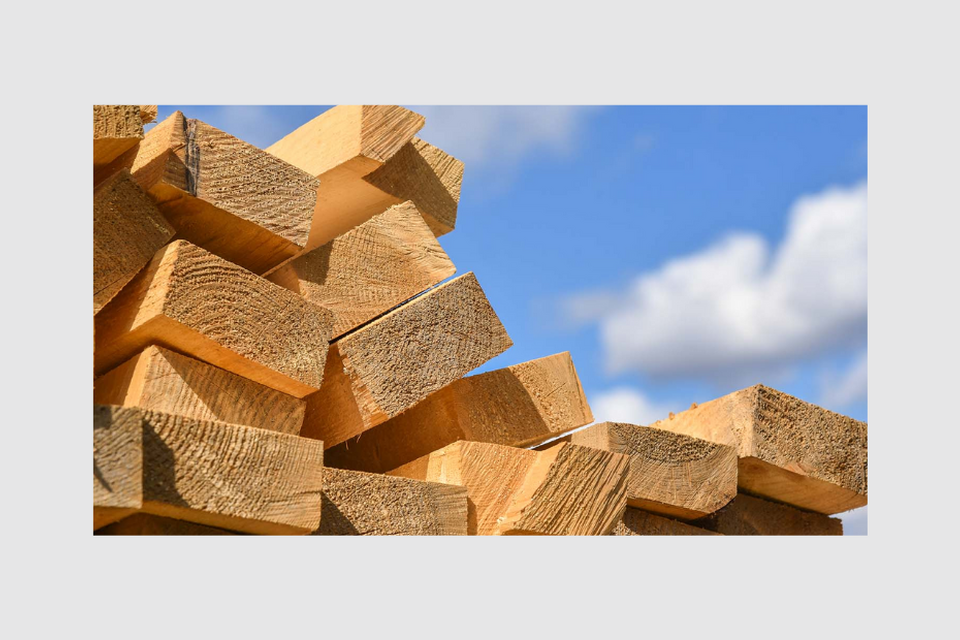October proved to be a quiet month for the lumber market as there generally wasn’t enough activity from lumber dealers to stimulate any notable volume of sales for wholesalers.
Dealers were committed to keeping their inventories lean and, although prices cracked early on, they did not fall to any great extent as production at the mills was reduced in response to and in anticipation of the now mostly evident case of a quiet fourth quarter. As purchases were curbed to immediate needs (and consisted mostly of highly mixed tallies pulled out of local distribution), traders and mills opined that dealers were running their inventories abnormally low, leading them to speculate that a “sneaky-strong” market could materialize quickly, if any sparks should turn to flames in terms of demand. This is a plausible scenario because business has not necessarily been bad, but buyers have been lulled into the comfort of being able get what they want when they want it, and at reasonable prices. Nonetheless, it is apparent that current supply is still greater than current demand, keeping prices relatively soft while the course of business remains unchanged. We anticipate that, unless some measurable demand or major upset to supply occurs, the market will likely remain on its current course for November, being muted but flat and, hopefully, uneventful.
One of the biggest objectives we face in construction is to control moisture, both as it relates to making buildings watertight (to prevent leaks and flooding) and as it pertains to the stability and performance of the materials we use (mostly, the moisture content of wood). Because wood absorbs and releases moisture, modern technology allows us to infuse wood with chemicals that greatly elevates its performance against rot and insect damage, commonly known as “pressure treating”. Pressure treated boards are boards that are immersed in a solution under high pressure, infusing the wood typically with a fungicide (to help prevent rot) and an insecticide (to discourage insect damage). There are three common types of treatment sold in the market, the first being the most notorious, Micronized Copper Azole (MCA) which is for wood that will be exposed to the elements or in direct contact with potential moisture, such as decks and sills. This is the green-colored framing lumber and plywood that we are accustomed to calling “pressure treated”. Due to environmental concerns and performance issues, an evolution over the years of different chemicals used in the treatment of this material has culminated with MCA and, although not as robust as some of its predecessors (such as CCA (Chromated Copper Arsenic)) it has proven its durability, but only with proper installation techniques. The other two common treatments are Borate and LOSP (light organic solvent preservative), both of which are commonly used on Radiata pine for primed trim boards and also as components of doors and windows. It should be noted that there is a big difference between Borate and LOSP: Borate is applied with a water-based solution (so wet conditions can easily leach out the preservatives) whereas LOSP, which is solvent-based, is more durable and the chemicals will not easily leach out under wet conditions. Incidentally, our ShepGuard Exterior PFJ Radiata trim boards are LOSP treated for this very reason, as the wet and humid climate of Cape Cod can pose a bigger challenge to the integrity of Borate treated products.
In all types, a very common misconception of the general process of pressure treating is the misunderstanding that the entire board has been treated when, in actuality, it has not. Particularly with MCA products, pressure treating can only be forced so far into the wood and the heartwood, being the dense core, will not absorb the solution like sapwood does. Another misconception is that preservatives will remain in the board if a fresh cut has been done but, as mentioned above, the preservatives can migrate out of the board if not resealed (just like moisture migrates in and out of any board). This is of particular concern because, according to most manufacturers’ installation instructions and warranties, you are required to reseal any cut pressure treated board with a preservative and/or coating in order to optimize its performance toward the prevention of rot, decay and insect damage. Although this can interrupt the speed of installation (and certainly can be seen as a hassle), we offer sealers and quality primers that make the job quick and effective, such as Woodlife CopperCoat for pressure treated decks and B-I-N and Bodyguard Sealer for ShepGuard Exterior boards. It is well worth the investment in time to take this necessary step, especially when skipping it may lead to a potential failure situation years later. Make no mistake, pressure treated boards have been a modern miracle to our industry and they are here to stay. For how long they last on your project though depends upon not only the proper application, but also proper sealing and finishing. An “ounce of prevention” is indeed worth “a pound of cure.”
Despite how the market has been, we’ve been quite busy, and November is shaping up to be a promising month: we’re optimistic that business will be good right through to the end of the year.
As your days become busier (and yet shorter due to the setting sun), please turn to us for whatever assistance we can provide. We sincerely want to be part of your successful outcome and are happy to help guide you along the way. Thank you for your business!
